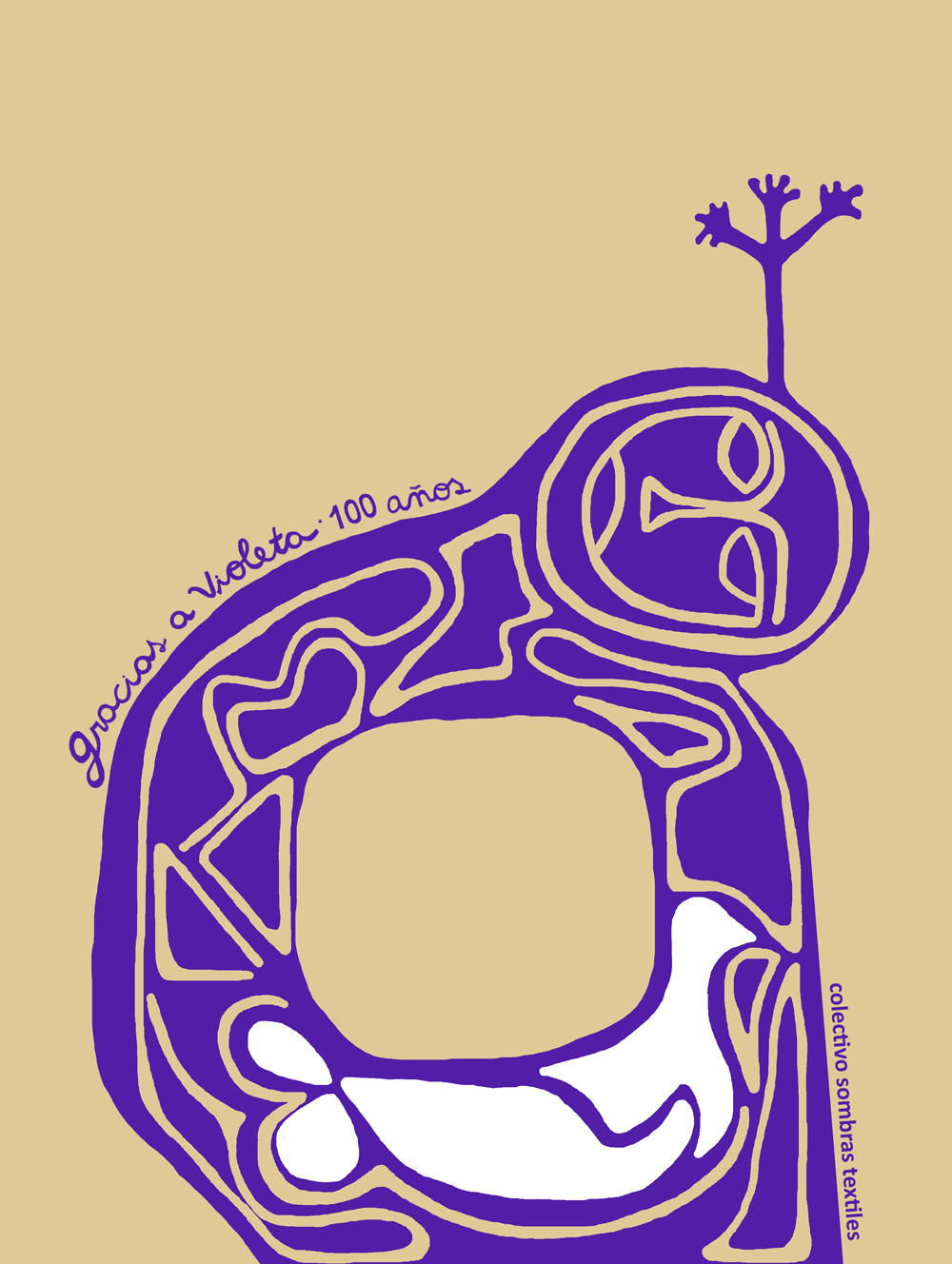Gracias a Violeta
Gracias a Violeta (Thanks to Violeta)
The creative process is a bird without a flight
plan that will never fly in a straight line
Violeta Parra

Many events happen without previous planning, since they just sprout spontaneously if there is fertile ground. However, a wild bud may or may not grow or develop. It might germinate and fleetingly disappear after a couple of days… it just remains there, like a potential idea or an attractive sketch that was never executed. Also, of course, the beauty of the wild lies in its fragility, in lasting while it is alive… in a fertile moment, as Violeta would say.
The Thanks to Violeta proposal followed this course, because Rocío Gómez Salazar and I took a thread that revealed an unexpected and fertile path, sprouting like moss on the stone. The origin of this thread was simply a beautiful community work to honor Violeta Parra in her 100th birth anniversary, which was initially created as a complement of the “Sombras Textiles” exhibition that had been presented at Providencia Cultural Foundation a year ago. Thus, spontaneously and implicitly we decided to keep track of this thread to see where it would take us. Still, a bud requires much more than just enthusiasm to preserve its existence. It is essential to provide appropriate light and hydration to develop roots, settle down and be strong enough to go up; in other words, work, support, conviction and perseverance are needed. In this way, this thread grew and became a rope, and at the same time we found ourselves increasingly committed to the project.
However, the process was not free of shortcuts and labyrinths. At some point, for example, we even dreamt of detours that took us to be in contact with The Museum of Decorative Arts (MAD) in Paris, where Violeta exhibited her burlaps in ’64. Then, in the midst of these laps and aimless flights we asked ourselves how we could continue, which thread we should follow to extend this fabric that was gaining strength not only from the embroidery but also from a social net, since other hundred Latin American hands had spun it with us.
Then, the origin of this Viola Chilensis appeared -as her brother Nicanor Parra wrote in 1960-. The starting point was San Carlos, her birthplace, and after that there were San Fabián de Alico and Chillán, as places of her family life. Thus, it took us to her hometown, specifically the Municipal Theatre of Chillán and its Violeta Parra Gallery to give them what is theirs for it to remain there, a part of this creator without a flight plan.
Alejandra Rojas Contreras















